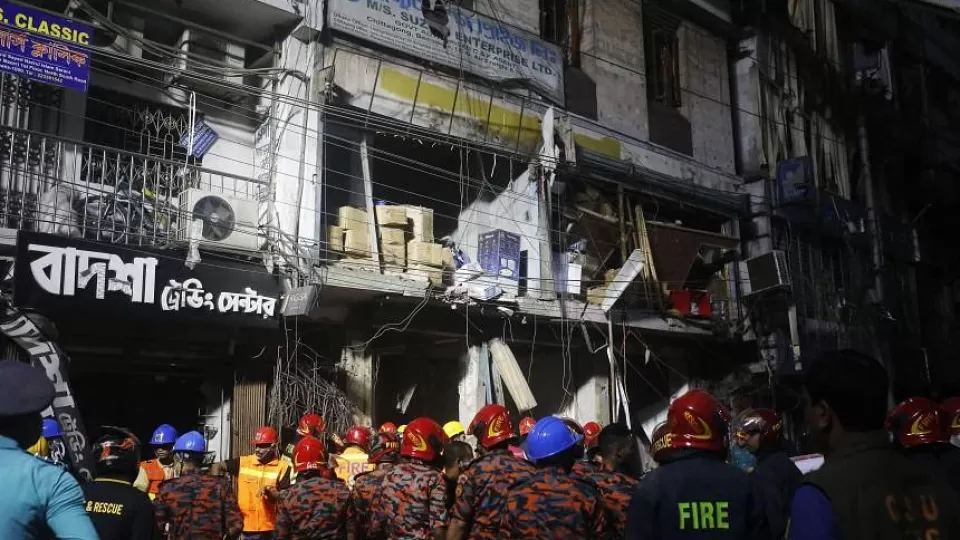March 9, 2023
DHAKA – Our deepest sympathy goes out to the victims of Tuesday’s deadly blast in Gulistan which led to the death of at least 19 people so far, and injured over a hundred. Some of the injured, we are told, are in critical condition, so the death toll may rise further. The frequency with which such explosion or fire-related incidents have been occurring in recent times is really worrying. Just over a span of four days, there have been three such incidents. On Saturday, an oxygen plant in Chattogram’s Sitakunda upazila was rocked by an explosion that blew its entire roof off, killing at least seven people. The next day, there was an explosion at Dhaka’s Science Lab area, which killed at least three and injured 40 others. The Gulistan explosion comes only two days after that.
According to those present there during the time of the blast, the whole neighbourhood apparently shook as if there was an earthquake. The windowpanes of the building where the blast occurred even fell onto the nearby street injuring pedestrians. What could have led to such a powerful explosion? Investigators so far have found no evidence of sabotage either in the Gulistan explosion or the Science Lab blast. Although their causes are yet to be fully determined, the chief of Dhaka Metropolitan Police (DMP) did suggest that accumulated gas may have caused the explosion at the Gulistan building.
Given that there is no option but to wait for the investigators to determine what caused the two explosions, we do not wish to speculate on them further. However, given the frequency of such cases and the damage they have caused – particularly in terms of lost lives – can they truly be called coincidences? Even if they were not the result of sabotage, the lack of focus given to building safety – which will become clear to anyone visiting the blast sites – is an issue that has long plagued Dhaka.
There is also the factor of efficiently conducting rescue operations, which deserves scrutiny. Reportedly, complications in getting clearance had delayed the resumption of rescue efforts at the Gulistan building on Tuesday night. Even though the fire service was ready to carry out their operation, they couldn’t enter the building without clearance from the Rajdhani Unnayan Kartripakkha (Rajuk). Whatever the issue for the delay was, during emergencies, those precious moments that are lost due to various reasons/delays could be the difference between whether someone gets to live or not. Hence, the fire service and other first responders need to have all the support from every government agency to carry on their important duties during emergencies. This message must be sent to every agency, and clear channels of urgent communications should be set up.
We hope that thorough and independent investigations will be able to clear up the confusion surrounding what caused the two explosions in Dhaka. At the same time, we urge the authorities to take the matter of building safety seriously, and improve our disaster preparedness and responsiveness.


